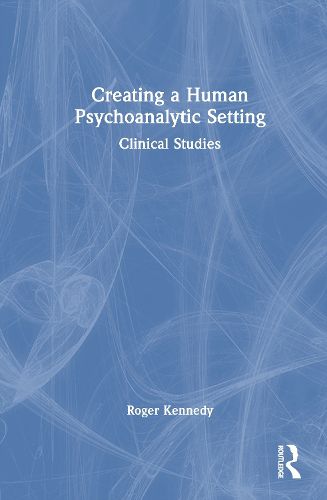Readings Newsletter
Become a Readings Member to make your shopping experience even easier.
Sign in or sign up for free!
You’re not far away from qualifying for FREE standard shipping within Australia
You’ve qualified for FREE standard shipping within Australia
The cart is loading…






This book looks at how psychoanalytic thinking can be applied in a variety of settings and can respect the individual experience and circumstances of each patient.
It focuses on the analytic encounter and the hard task around trying to create what the author calls a human analytic setting, one which respects human diversity and theoretical pluralism, pays adequate attention to the patient's emotional pain and suffering, while hopefully facilitating psychic change. Starting by looking at general features of independent psychoanalysis, the author explores institutional and political issues which can either facilitate or restrict psychoanalytic thinking and institutional life. He also explores key themes such as the nature of subjectivity, subject relations, and the nature of absence and presence, through case studies. The final chapters elaborate on the duality of the psychoanalyst's identity - one centred around the psychoanalyst's need for a home base for their confidence as practitioners, the other about the challenges facing analysts having to work in solitude for much of their working life.
With a focus on the intimate relationship between what happens in the analytic setting and the analyst's own institutional influences, this is key reading for psychoanalysts and psychotherapists.
$9.00 standard shipping within Australia
FREE standard shipping within Australia for orders over $100.00
Express & International shipping calculated at checkout
This book looks at how psychoanalytic thinking can be applied in a variety of settings and can respect the individual experience and circumstances of each patient.
It focuses on the analytic encounter and the hard task around trying to create what the author calls a human analytic setting, one which respects human diversity and theoretical pluralism, pays adequate attention to the patient's emotional pain and suffering, while hopefully facilitating psychic change. Starting by looking at general features of independent psychoanalysis, the author explores institutional and political issues which can either facilitate or restrict psychoanalytic thinking and institutional life. He also explores key themes such as the nature of subjectivity, subject relations, and the nature of absence and presence, through case studies. The final chapters elaborate on the duality of the psychoanalyst's identity - one centred around the psychoanalyst's need for a home base for their confidence as practitioners, the other about the challenges facing analysts having to work in solitude for much of their working life.
With a focus on the intimate relationship between what happens in the analytic setting and the analyst's own institutional influences, this is key reading for psychoanalysts and psychotherapists.